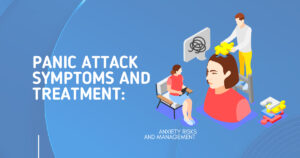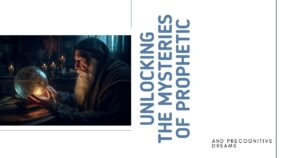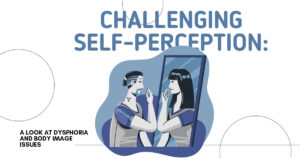There are four main types of bipolar disorder, which many people don’t realize about this diagnosis. One common question people have is the difference between bipolar 1 and bipolar 2 because these tend to be the most frequently diagnosed subtypes.
Below, we’ll talk more about this mental health disorder and compare the types to help you understand how psychiatric disorders vary.
What is Bipolar Disorder?
Everyone experiences different emotions and shifts in mood throughout their life, but if you have bipolar disorder, you may experience abnormally dramatic highs and lows in how you feel.
You could feel very energetic and excited and then feel very severe depressive symptoms at other times. Depending on the person and the diagnosis, the peaks and valleys of emotions can last for weeks or even months.
The terms you’ll often hear when talking about these diagnoses include:
- Mania: A manic episode isn’t just being high energy or elated. Manic episodes are so intense they interfere with your functionality and activity levels in daily life. You may find that if you’re in a manic state, you aren’t able to calm yourself down or become more reasonable. It’s common for someone in a state of mania to make irrational decisions, like spending a lot of money. Also common during manic episodes is risky behavior. If someone experiences symptoms of mania under the influence of substances, it’s not considered a manic episode. It’s a separate issue when mania is triggered by a substance.
- Hypomania: A hypomanic episode is a less severe period of mania. While it’s not as severe as full-blown mania, hypomanic symptoms are similar.
- Depression: Depressive symptoms are similar in this disorder to what other people with depression may experience. For example, episodes of depression may include hopelessness, sadness, and loss of interest. Irritability, fatigue, problems concentrating, changes in eating and sleeping habits are depressive symptoms. Thoughts of suicide or suicidal behaviors are severe forms of depressive symptoms.
Manic symptoms can include:
- Anger
- Irritability
- Problems sleeping
- Reduced need for sleep
- Overactivity
- High energy levels
- High self-esteem can occur during an episode of mania
- Elevated mood
- Decision-making difficulties
- Extreme excitement
- Racing thoughts
- Pleasure-seeking, such as increased sexual behaviors or substance use
- Recklessness
- Restlessness
Bipolar depression symptoms can include:
- Low energy
- Insomnia
- Sleeping too much
- Overeating or loss of appetite
- Lack of concentration
- Anhedonia (loss of interest)
- Low self-esteem
- Physical pain
- Irritable mood
There’s also the possibility of additional symptoms, including anxiety or psychotic symptoms. During a psychotic episode, a person can lose touch with reality. The individual might have delusions or hallucinations.
Sometimes people with this mental health disorder go through rapid cycling. Rapid cycling refers to having at least four episodes in the past year, with periods of occasional remission for at least two months or a change to the opposite mood.
Diagnosing Bipolar Disorder
A mental health professional such as a psychiatrist usually diagnose this mental illness. The diagnosis includes a review of a person’s mental and medical history and symptoms related to mania or depression.
A health professional might first do a physical exam to rule out other causes for symptoms and clinical features. From there, someone might undergo a more intensive mental health evaluation.
It can be challenging to make an accurate diagnosis because bipolar symptoms can overlap with many other conditions, including major depression, attention deficit hyperactivity disorder (ADHD), or a personality disorder.
While experts don’t know exactly what causes bipolar, they believe several factors contribute. Genetics, family history, and environmental factors are three of the main factors that are probably contributors.
People with these mental health conditions seem to have variations in their genes that increase the risk of developing it. If a parent or sibling has the disorder, this is considered one of the risk factors. Having an environment with high levels of stress can trigger symptoms. Abusing alcohol or drugs can also increase the risk or make bipolar disorder symptoms worse.
Mental Health Center of San Diego
Types of Bipolar Disorder
Bipolar is a mood disorder. There are currently four particular types in the Diagnostic and Statistical Manual of Mental Disorders,” as well as a category for unspecified and related disorders.
- Bipolar I: This is the most common subtype of this mental health and mood disorder. This type of disorder includes manic episodes that last seven days or more or severe mania requiring hospitalization. Someone with this disorder may have a major depressive episode lasting two weeks or more. You don’t have to experience a depressive episode to diagnose this subtype.
- Bipolar II: Bipolar 2 criteria include a combination of mania and depression. The mania is less severe, making it hypomania. Someone with this subtype may have a major depressive episode before or after an episode of hypomania.
- Cyclothymic disorder: Also referred to as cyclothymia, symptoms include hypomania and depression lasting two years or more in an adult or a year in a child. The symptoms don’t necessarily fit the criteria for completely manic or depressive episodes.
Again, bipolar I and II are the most common subtypes of this mental and medical condition.
Mental Health Center of San Diego
How is Bipolar 1 Different from Bipolar 2?
Back to our original question—what is the difference between bipolar I and bipolar II?
- The primary difference between the two types of mental disorders is the severity of the bipolar episodes of mania.
- Someone with bipolar I will experience full manic episodes, while in the bipolar II subtype, the person is likely to only experience hypomania. Hypomania is a less severe form of mania, as we touched on.
- Someone with the first subtype may not have major depression, but someone with the second subtype will have a major depressive episode.
- The diagnostic criteria for bipolar 1 disorder are at least one manic episode, with or without a depressive episode.
- For a diagnosis of bipolar 2 disorder, someone would have at least one major depressive episode lasting a minimum of two weeks and at least one hypomanic episode.
There may be more distinct periods of extreme mood because of the severe episodes of mania that can occur with bipolar I.
It’s common for bipolar II to be misdiagnosed as a depressive disorder which can delay proper treatment.
Treatment for Bipolar 1 and Bipolar 2 Disorder in San Diego
A healthcare provider can work with someone individually to determine what treatment may work for them based on their situation and symptoms. Bipolar disorder is chronic or lifelong, so the goal is to manage symptoms and keep them under control but there isn’t a cure.
Medications are often part of a treatment plan.
The mood stabilizer lithium is often helpful to prevent long-term relapse. Other medicines include antipsychotic drugs, anti-anxiety medication, antidepressants, and sleeping pills.
Psychotherapy is helpful along with medication. With psychotherapy or talk therapy, you can learn how to recognize changes in your moods and thoughts and cope or respond in the best way possible. You can also work with a therapist to create healthy routines.
People with this disorder benefit from specific lifestyle changes such as avoiding drugs or alcohol, eating a healthy diet, and exercising regularly.
Mental Health Center of San Diego
Getting Help
If you’re struggling with bipolar disorder or another mental health disorder, talk to a mental health professional who can help create a treatment plan that works for your lifestyle and needs. If you’d like to learn more about bipolar disorder, please contact the Mental Health Center of San Diego today.
Having an untreated mental health disorder affects your quality of life, relationships, and every aspect of your life. If you have a substance use disorder along with a mental health disorder, it’s also important to get help for both; otherwise, you may start to experience more severe symptoms over time.









